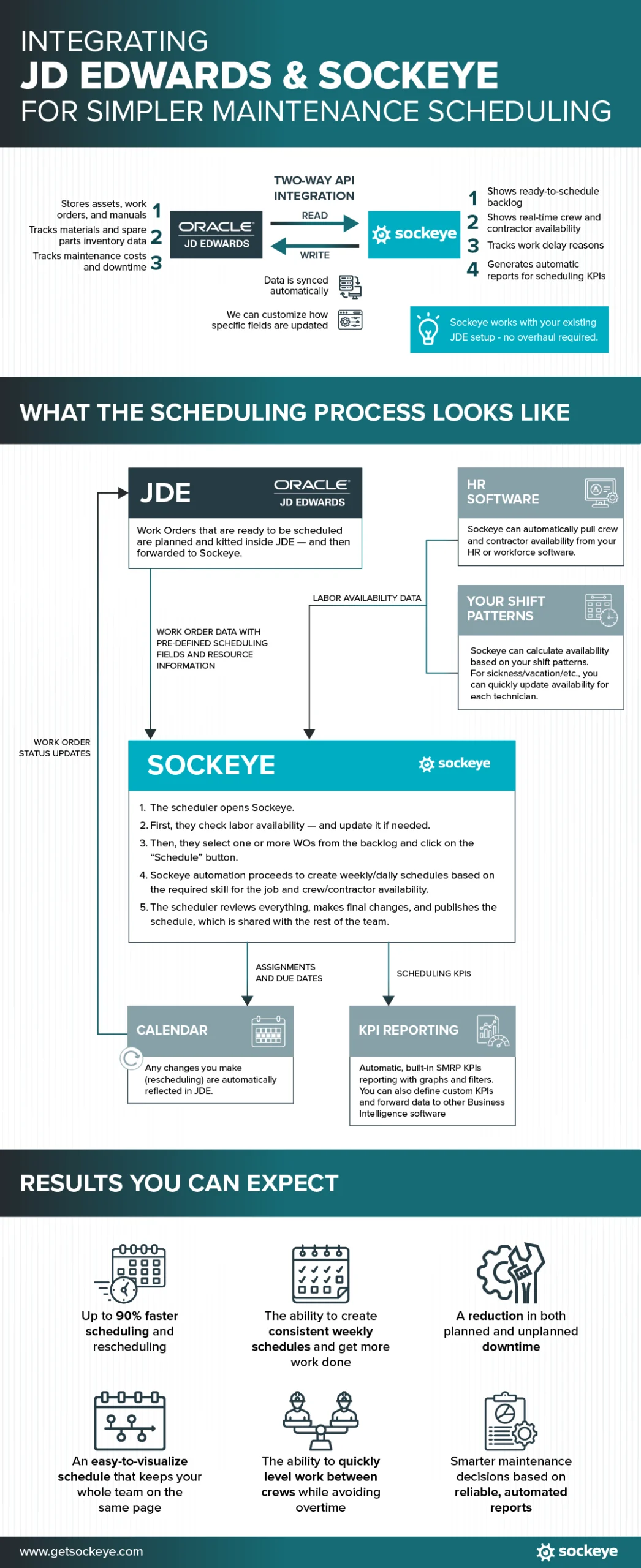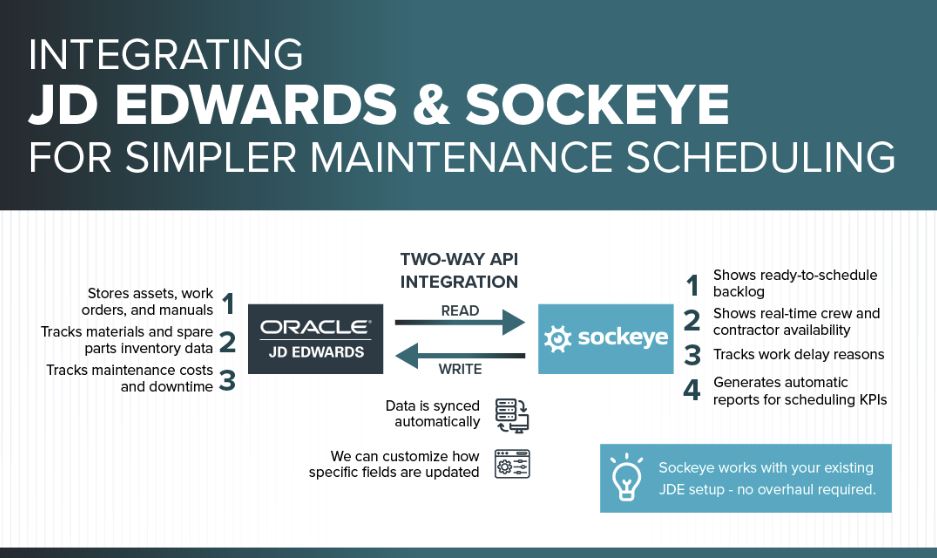If you’ve ever found yourself knee-deep in JD Edwards screens just to schedule a few maintenance tasks, you’re definitely not alone.
While JDE offers a powerful system for managing assets, we talked with numerous maintenance teams that find its scheduling tools too complex. This leads to frustration, workarounds, and hours spent juggling spreadsheets.
When maintenance scheduling becomes a bottleneck, it affects your entire operation — from technician efficiency to response times and compliance. That’s why more JDE users are using add-ons like Sockeye to simplify scheduling without overhauling their entire system.
Let’s quickly examine why scheduling in JD Edwards can feel so difficult and use an infographic to showcase how Sockeye solves the problem.
The reality of scheduling in JD Edwards
JD Edwards is great at many things. It gives maintenance teams the structure to manage assets while tying everything to purchasing, inventory, and finance.
Unfortunately, this robustness comes at the cost of complexity in scheduling:
- Steep learning curve: New schedulers often need weeks — sometimes months — of hands-on training to get comfortable with JDE’s scheduling modules. This creates a bottleneck where only a few “power users” understand how to use it properly.
- Lack of visual tools: If you want to know what’s scheduled for next week or how loaded your crew is, you’re bouncing between multiple screens or exporting data to Excel.
- Inefficient daily workflows: Schedulers spend hours navigating through multiple modules just to assign work orders, check availability, and adjust plans. They often need to cross-reference paper or spreadsheet schedules to fill the gaps.
- Inconsistent schedules: Unsatisfied with JDE, teams rely on disconnected tools like Excel — leading to double bookings, missed tasks, and general confusion about what’s actually scheduled, completed, or reassigned.
- Unverifiable data: Schedulers spend too much time chasing updates and can’t always trust the data in front of them. You end up with inconsistent KPIs that are hard to trust, hard to access, and time-consuming to report on.
Because of all these limitations, many teams fall back on using Excel, manually reconciling updates between JDE and spreadsheets. Instead of one source of truth, teams end up juggling multiple versions of “the schedule” — and no one’s totally sure which one is right.
In short, planners/schedulers spend more time managing the process of scheduling than actually optimizing it.
Enter Sockeye: Scheduling bolt-on built for JDE users
Sockeye doesn’t replace JDE — it complements it. It’s a lightweight add-on that connects directly to your JDE environment: it reads your work order data, helps you build and track the schedule, and then forwards that data back to JDE.
You still use JDE to manage your assets and plan work. Sockeye just makes the (re)scheduling and KPI reporting 10x faster and easier.

Sockeye is built for busy maintenance teams
With Sockeye’s powerful automation, you can create weekly and daily maintenance schedules with just a couple of clicks — based on required skills and real-time tech and contractor availability.
Need to move a job to tomorrow? Reassign a work order to a different crew? Just drag and drop. Sockeye instantly updates JDE in the background, keeping your records clean and your schedule accurate.
Everyone sees the same live schedule — from supervisors to field teams — so you can coordinate in real-time and respond faster when plans change. Whether you’re balancing workloads, managing contractors, or covering an unexpected breakdown, Sockeye helps you stay ahead.
If you’ve ever thought: “There has to be an easier way to schedule in JDE” — there is. Jump on a call with our team and let us show you how Sockeye can maximize the value of your JDE investment.
